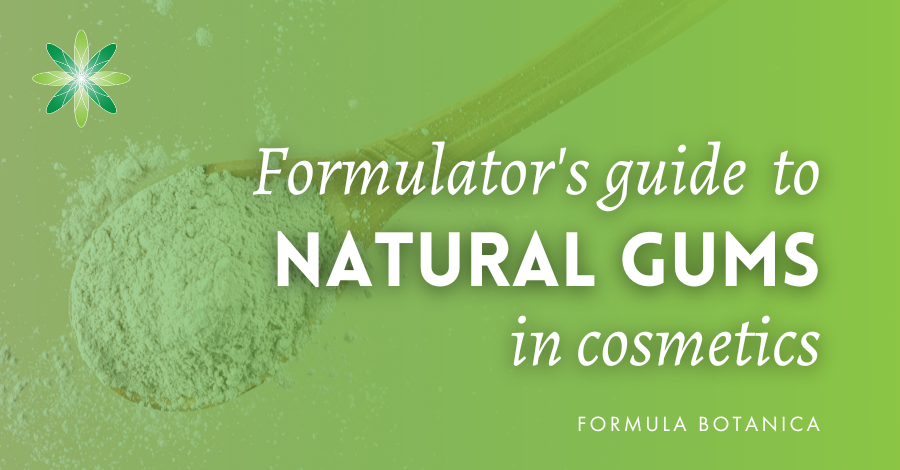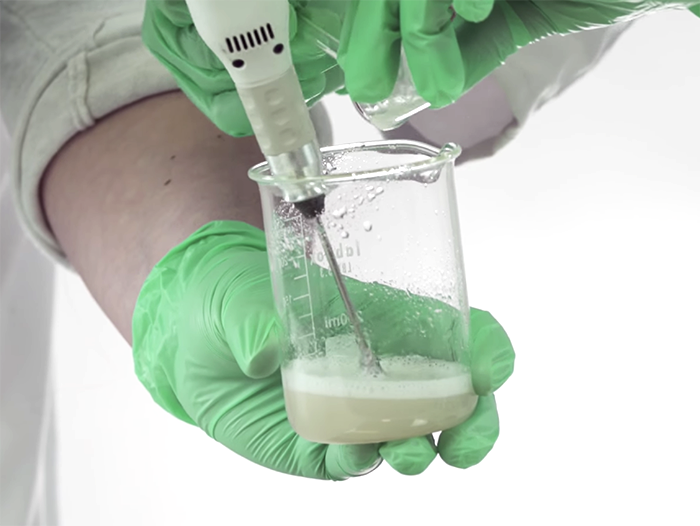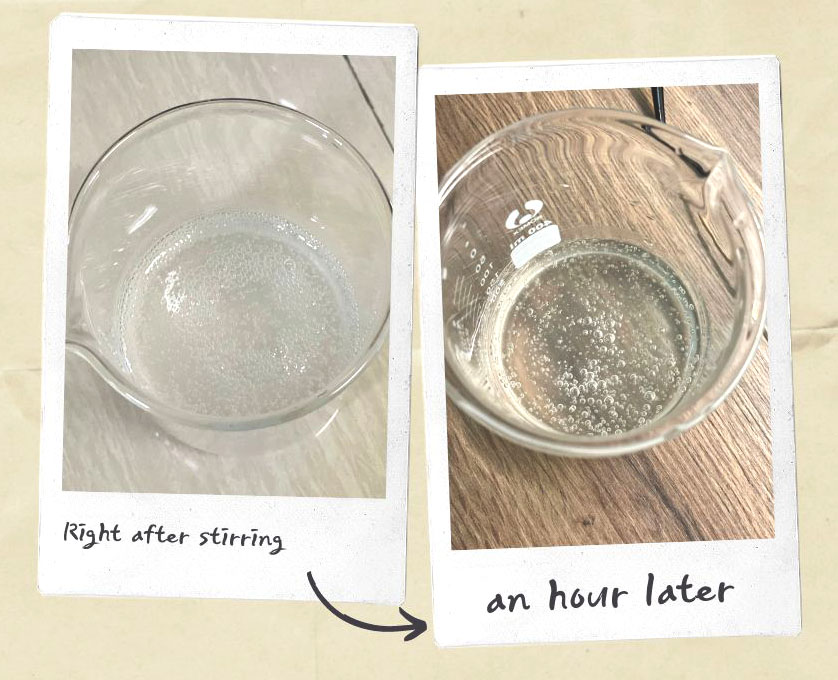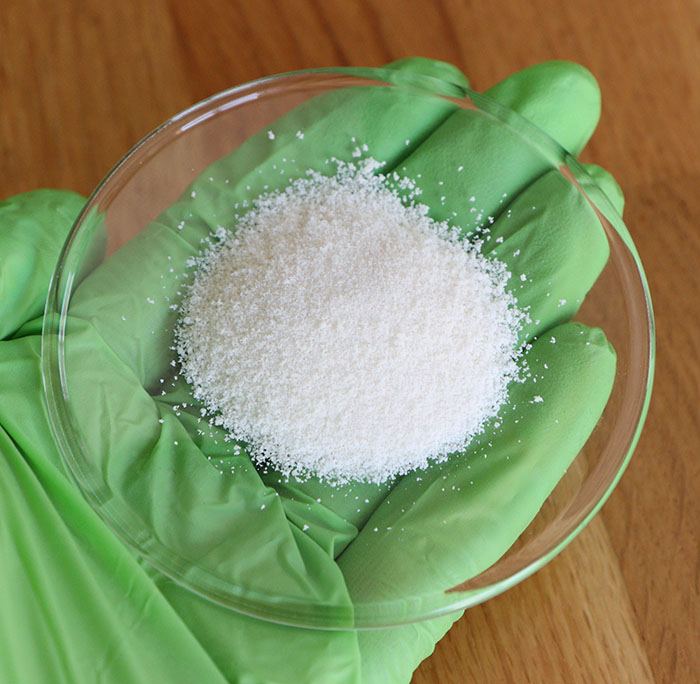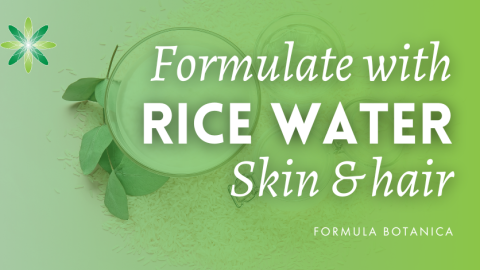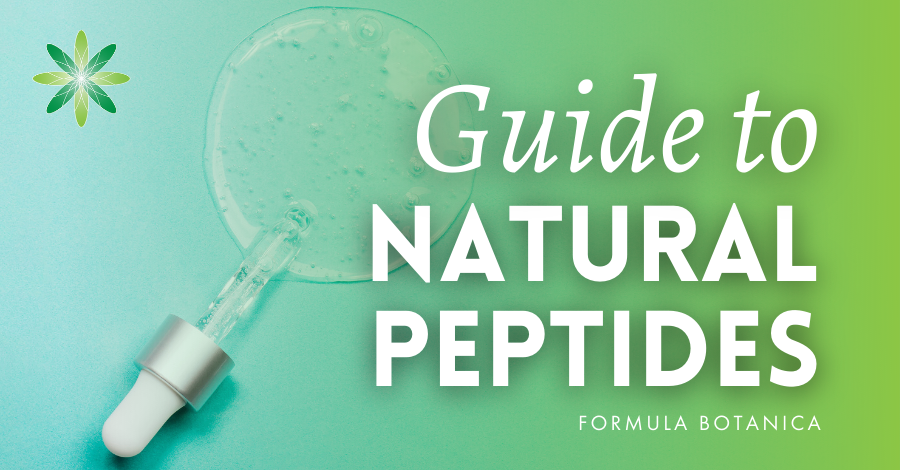Cosmetic gums are some of the first ingredients new formulators come across. They are used mainly to make gels and as thickeners in other cosmetic formulations such as emulsions. Some of them are easy to find and use, and even beginner formulators are able to make simple products using natural gums.
As basic ingredients, it is vital to understand what they are and how they work in order to choose the right gum to achieve the best results for your products.
In this guide, we walk you through some theory behind natural gums and tips on how to use them, as well as present some gum options that can be added to your cosmetic formulations.
What are natural gums?
Natural gums are polymers, which means they are macromolecules with repeating structural units. Natural gums are composed of polysaccharides. These substances have areas within them that are able to interact with water. When hydrated, they form tridimensional structures, “trapping” the water inside them and increasing the viscosity of the solution.
Gums play several important roles in various industries and in a wide variety of products. They are used in the food, pharmaceutical, cosmetics and other industries. In cosmetics, they display various functions, such as modifying the viscosity and appearance of the product, improving sensory characteristics, suspending insoluble ingredients, stabilising emulsions, and modifying foaming properties in surfactant-based products. In addition, they present film-forming properties, helping to keep the skin hydrated.
Gums are derived from several sources such as seaweeds and animals, and from a variety of plants, fungi and other microbial sources. Plants are the largest source of both natural and semi-natural gums. Semi-natural gums contain synthetic components in the final ingredient form that are not accepted in natural formulations, with a few exceptions.
In addition, the water-binding regions of gums can carry different types of ionic charge:
- Anionic – have a negative charge. They are commonly used in water-based gels and serums, liquid shampoos, and gel cleansers. Usually, they are incompatible with cationic ingredients and most lose viscosity in acidic environments.
- Cationic – have a positive charge. They are mostly used in haircare products.
- Amphoteric – can present both positive and negative charges, depending on the pH of the solution.
- Non-ionic – no ionic charge. More resistant to low pH, which is why they can be used in products containing alpha-hydroxy acids (AHAs) and other acids.
This information is available from gum manufacturers and suppliers and can be found on their websites and in brochures, technical data sheets and similar documentation.
Below are some examples according to the charge.
| Gum Charges | Natural gums | Semi-natural gums |
|---|---|---|
| Anionic | Xanthan gum | Carboxymethyl cellulose (CMC) |
| Gum arabic | Cellulose gum | |
| Gum tragacanth | Microcrystalline cellulose | |
| Carrageenan | ||
| Cationic | Chitosan | Cationic guar gum (guar hydroxypropyltrimonium chloride) |
| Amphoteric | Carboxymethyl chitosan | |
| Modified potato starch | ||
| Non-ionic | Guar gum | Cellulose ethers: |
| Konjac gum | Methyl cellulose | |
| Sclerotium gum | Hydroxy ethyl cellulose (HEC) | |
| Dextrins | ||
| Starch |
Natural gums can be further classified by source, as below.
Marine origin/algae
Carrageenan, agar, alginic acid.
Plant origin
Tree exudates: gum arabica, gum tragacanth.
Seed gums: guar gum, locust bean gum, starch cellulose.
Extracts: pectin, larch gum.
Tuber and roots: potato starch, konjac gum.
Microbial origin (bacterial and fungal)
Xanthan gum, pullulan, dextrin, scleroglucan polyssacharide.
Formulating with natural gums
There are many applications in which natural gums can be used. Products in which they can be added as gelling agents include gel-based formulations such as liquid shampoos, hair conditioners, shower gels, facial gel washes and masques, to name a few.
Generally, each type of gum can function on its own. However, sometimes they can create a better texture when combined in synergy with two to three other types of gum. One example is Solagum™ AX, in which xanthan gum is combined with gum arabic, thereby improving the sensory characteristics and stability of both.
Gum grades and types
Natural gums are available in different grades as well as in different combinations as proprietary blends. For example, there is a high-grade xanthan gum that creates a transparent gel base, in contrast to other types of xanthan gum that create a cloudy gel base. However, the latter are more commonly available and accessible to the home formulator.
Gums in emulsions
In oil-in-water emulsions, gums play a vital role as stabilisers. They act as thickeners of the water phase. By doing so, they help prevent the oil droplets from colliding into each other, which would ultimately lead to phase separation and breaking of the emulsion.
How to hydrate gums
You may find that hydrating gums is not a simple task. If added directly to water, gums tend to form lumps (also known as “fish eyes”), which will not break down easily. Applying high shear or using a blender may introduce bubbles to the product, which might not be aesthetically appealing.
So, a common trick used to avoid this situation is to first disperse the gum powder in glycerine or propanediol to form a slurry. These are humectants that work as wetting agents for the polymer, helping the water penetrate their network structure. Then, this slurry is added to the water phase while stirring.
If you do not wish to use glycerine or propanediol, you can sprinkle the powder slowly over the water using a magnetic stirrer or other mixing tools, but this method requires more patience. In emulsions, it is also possible to add the gums to the oil phase, in which they will not solubilise until contact with the water phase.
It is important to note that some gums, such as carrageenan, require heating to properly hydrate and form gels. Always read your supplier’s information for their advice on how to hydrate a particular gum and on the optimal percentage it should be used at.
5 Natural gums
Here, we profile 5 common natural gums that are used in a wide range of cosmetic formulations. These gums are ideal to experiment with especially if you are starting out as formulator. We recommend trialing them alone and in simple formulations first to understand how they perform.
Xanthan gum
INCI: Xanthan Gum
Xanthan is usually the first gum that formulators come into contact with. It is easy to find and affordable, which is one of the reasons it is so popular.
This gum is an anionic polymer produced by aerobic fermentation from the bacteria Xanthomonas campestris. It forms stable gels easily and can be cold or hot processed. Xanthan gum remains stable in a wide pH range and is compatible with many non-ionic, anionic and amphoteric ingredients, but not cationic ones.
Some disadvantages of xanthan gum are the hazy appearance of its gels and that it is quite sticky. Some different grades provide transparent gels and an improved skin feel. Check with your supplier to find out which they stock. We show the high-grade xanthan gum below. You can see how easily it clarifies.
Guar gum
INCI: Cyamopsis Tetragonoloba Gum
Guar gum is a thickener obtained from the seeds of Cyamopsis tetragonolobus, which is a legume. This gum rapidly hydrates in hot or cold water and is able to produce thick gels. However, if used alone, it can present a “snotty” consistency. When blended with xanthan gum, it makes highly viscous solutions.
As guar gum is non-ionic, it is compatible with ingredients with any kind of ionic charge. Do not mistake it for cationic guar gum, which has different properties. One cannot be used to substitute the other.
Konjac gum
INCI: Amorphophallus Konjac Root Extract
Konjac gum is a non-ionic polysaccharide extracted from the tuber of the plant Amorphophallus konjac.
It can be dispersed in hot or cold water and forms clear, transparent gels, with a better skin-feel than xanthan gum. Konjac is also stable over a wide pH range. This gum makes highly viscous gels, especially when blended with xanthan gum or Solagum™ AX.
Gum arabic (gum acacia)
INCI: Acacia Senegal Gum
Gum arabic, also commonly known as gum acacia, is extracted from the sap of the Acacia senegal tree.
In contrast to other gums, it does not present good gelling properties and does not form thick gels, but it interacts with lipids, helping to stabilise emulsions. Also, it provides a nice skin-feel and a silky touch to formulations.
This gum is able to lay an adhesive film, which is one of the reasons it is often used in colour cosmetics, as it helps the pigments adhere to the skin.
Gum arabic can be dispersed in cold water then heated to 70ºC until fully hydrated.
Solagum™ AX
INCI: Acacia Senegal Gum (and) Xanthan Gum
Solagum™ AX is a proprietary blend (see above photo) that consists of xanthan gum and gum arabic. It forms low-to-medium viscosity, non-sticky, clear gels with a pleasant skin-feel. It is stable over a wide pH range, from 3 to 12.
It presents good particle suspension properties and helps stabilise emulsions. Also, it is compatible with a wide range of actives, including alpha-hydroxy acids.
How do I know which gum to use?
As you experiment with different gums, you will start to understand how each behaves and understand their texture and how they feel on the skin. In order to choose the best gum for your formulations, you should keep these points in mind:
Is my formulation cold or hot processed?
If it is cold processed, you need to use gums that hydrate easily in cold water. If your formulation is hot processed, be sure your gum can withstand heating or that it can be added in the cool-down phase.
What gum do I use to cover the pH of my product and the actives I want to use?
Make sure your gum is stable over the pH range you are working within. For example, if you are going to use acids, your gum, or gum blend, needs to be able to work at low pH. Usually, non-ionic gums are good choices in this case, but some anionic gums also can stand acidic environments.
Are the other ingredients compatible with my choice of gum(s)?
In addition to the pH in which the gum and actives work, it is important also to find out if their charges are compatible. So, for example, if you are making a hair product using cationic actives or emulsifiers, you know it is best to avoid using anionic gums as they can lose their viscosity and even form precipitates. Furthermore, some gums are sensitive to electrolytes, so check any accompanying technical documents to see if you can combine these two types of raw materials in your product.
What are the texture and skin-feel I am looking for in my product?
Different gums provide a variety of viscosities and can feel different on the skin. This is why it is important to experiment to get to know each one. Also, some gums work in synergy and can be blended to form thicker gels or to allow a superior texture than gums used alone.
Do I want a clear, transparent gel?
If you do, you can narrow your options as most gums make translucent and hazy gels. Konjac, carrageenan and transparent-grade xanthan gum are some options to obtain clear gels.
Final thoughts on using natural gums
Although gums are some of the most basic ingredients used in natural cosmetics, the important details about why, when and how best to use them can be overlooked. There is a whole universe of information about them. Even if you are an experienced formulator, there is always something new you can learn about working with natural gums.
There is a wide variety of natural gums to use in cosmetic formulations and each has its own attributes. As usual, the best way to learn about them is to experiment and try them in different products to compare their texture, skin-feel, and aesthetics. You should also study their properties before formulating. You can avoid wasting time and resources if you learn beforehand about why some gums work or not in certain formulations and ingredient combinations.
You can also have fun trying to blend different gums and compare the results with formulations made using each gum on its own. Remember to always take notes about your tests so can you can refer back to your findings.
Further reading
GOSWAMI, S., NAIK, S. Natural gums and its pharmaceutical application. Journal of Scientific and Innovative Research, v. 3, n.1, 2014.
GUPTA, D.K. et al. Pharmaceutical significance of natural gums: A review. International Journal of Pharmacy and Technology, v. 5, n. 2, 2013.
LANKALAPALLI, S., SANDHALA, D. A Review on Natural Gums and Their Use as Pharmaceutical Excipients. International Journal of Pharmaceutical Sciences and research, v. 10, n. 12, 2019.
FREE TRAINING
Learn how to become an
Organic Skincare Formulator
FREE TRAINING
How to become an
Organic Skincare Entrepreneur
FREE TRAINING
How to become an
Organic Skincare Entrepreneur
Leave us a comment

Beatriz Amaral, a cosmetic scientist worked at Formula Botanica from 2021 – 2025. Read more about the Formula Botanica team.

